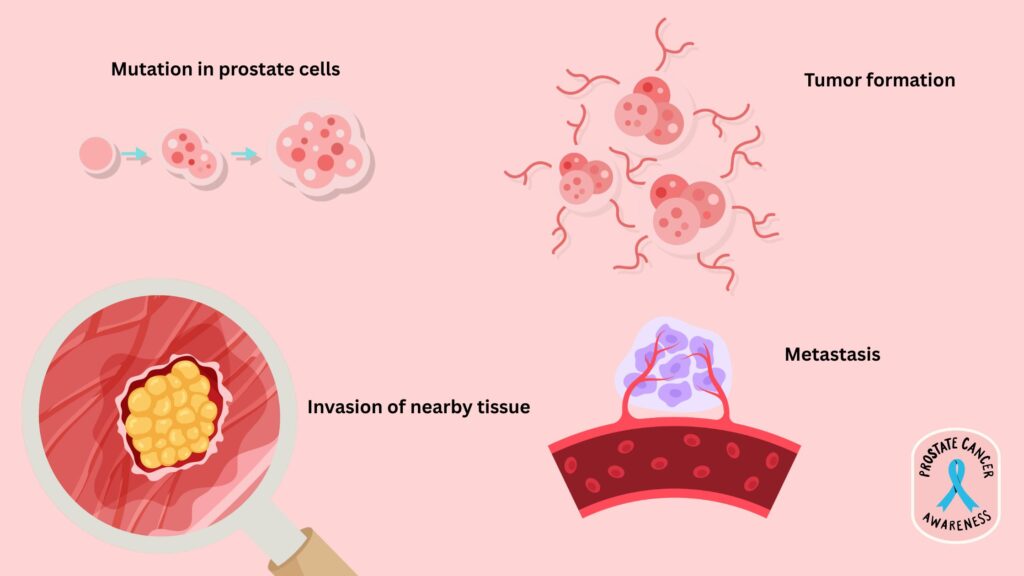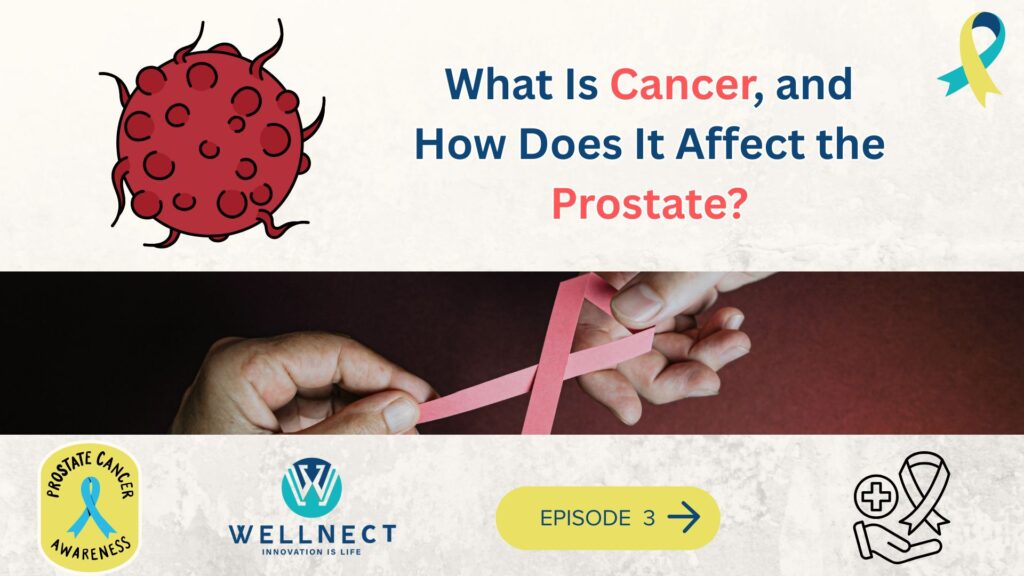Prostate Cancer Awareness Series – By Wellnect India

🧠 Introduction: Understanding Cancer Before Fighting It
The word “cancer” can be terrifying.
It brings fear, confusion, and sometimes hopelessness.
But to defeat something, we must first understand what it truly is.
In this episode of our Prostate Cancer Awareness Series, we’ll explore:
- What is cancer at the biological level?
- How does it happen in the body?
- How does it affect the prostate gland?
- And why early detection can make all the difference.
🧬 What Is Cancer?
To put it simply — cancer is the uncontrolled growth of abnormal cells in the body.
Normally, our body’s cells grow, divide, perform their duties, and then die in a controlled cycle.
But sometimes, due to genetic mutations, certain cells refuse to die and start multiplying abnormally.
These uncontrolled cells:
- Invade nearby healthy tissue
- Disrupt the function of organs
- Can spread to other parts of the body through the blood or lymphatic system (called metastasis)
Cancer isn’t a single disease — it’s a group of over 100 related diseases, and prostate cancer is one of the most common types in men.
📍 How Does Cancer Develop in the Prostate?
The prostate gland — located just below the bladder and surrounding the urethra — can become cancerous when the glandular cells start multiplying without control.

Here’s how it progresses:
1. Mutation in prostate cells
Damage in the DNA of prostate cells causes them to behave abnormally.
2. Tumor formation
The abnormal cells clump together, forming a tumor. In early stages, this tumor stays inside the prostate.
3. Invasion of nearby tissue
If left unchecked, the tumor grows beyond the prostate and spreads to nearby structures like the bladder, seminal vesicles, or rectum.
4. Metastasis
In advanced stages, prostate cancer cells may spread to bones, lymph nodes, or even distant organs.
This progression can happen silently, which is why early detection is critical.
⚠️ Why Is Prostate Cancer Called a Silent Killer?
Because in its early stages, prostate cancer often has no symptoms at all.
When symptoms do appear, they’re often mistaken for something else — like aging or minor urinary problems.
Some early signs may include:
- Frequent urination, especially at night
- Weak or interrupted urine flow
- Difficulty starting or stopping urination
- Pain or burning during urination
- Blood in urine or semen
- Erectile dysfunction
By the time severe symptoms appear, the cancer may already be in advanced stages.
That’s why it’s often called a “silent killer.”
🧑⚕️ Who’s at Risk?
Prostate cancer risk increases with:
| 🔍 Risk Factor | 📈 Details |
| Age | Most common in men over 50 |
| Family history | Higher risk if father or brother had prostate cancer |
| Ethnicity | More common in African and Indian men |
| Diet & lifestyle | High-fat diets, obesity, lack of exercise |
| Hormones | High testosterone levels may increase risk |
🛡️ Can Prostate Cancer Be Cured?
✅ Yes — if caught early, prostate cancer is highly treatable.
There are multiple treatment options including:
- Active surveillance (for low-risk cases)
- Surgery (prostatectomy)
- Radiation therapy
- Hormone therapy
- Modern technologies like laser treatments and micro-ultrasound–guided biopsies (EXACT VU) (which we’ll discuss in later episodes)
🧠 Wellnect’s Message: Cancer Is Not the End — It’s a Wake-Up Call
When detected early, prostate cancer has one of the highest survival rates among all cancers.
So instead of fearing the word “cancer,”
let’s focus on awareness, regular checkups, and timely testing.
Wellnect is committed to providing modern diagnostic tools and spreading awareness —
so that no man loses his life simply due to lack of knowledge.
🔜 Coming Up Next
In Episode 4, we’ll talk about:
👉 How do we detect prostate cancer early?
👉 What are PSA and MRI, and how do they help?
Stay with us as we simplify the medical jargon — and bring you closer to early detection and prevention.
